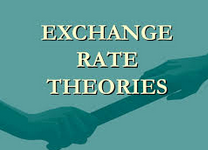The set of equilibrium theories is a discussion of the fundamentals in a global economy. Long-run exchange rate theories, particularly, explore the concept of multiple markets and whether or not they can remain at equilibrium regardless of the possible influence of various economic agents. For experienced traders, getting familiar with the concepts may be useful in determining the most profitable setups in the foreign exchange markets.
Why Is There a Need for Equilibrium?
A multitude of exchange rate theories highlights the positive effects of an economy in equilibrium; it suggests that for temporary, unstable, and inconsistent markets to be eliminated, balance is the key. Although a trading imbalance has its advantages for the global economy, the fair distribution of goods and services comes with perks – and not just for domestic targets. Also, if it is achieved, it will result to a greater appreciation of domestic currencies.
The Real Exchange Rate, as Defined
The real exchange rate is measured by giving light to domestic price and foreign price. Since it is known that various estimations for the real rate will only result to complexities (i.e. the number is inconsistent), sticking to a general formula is recommended. As it follows, the calculation for the real rate states that after the nominal exchange rate and foreign price have been multiplied, the amount must be divided by the domestic price.
The formula:
Real rate = (nominal exchange rate X foreign price) / domestic price
The Family
Exchange rate theories can be substantial on their own; if merged, however, the clash of ideas makes a better argument. According to the particular set of equilibrium theories, if internal imbalance is achieved, a country will experience a low-inflation period. Conversely, if external imbalance is achieved, a high-inflation period will be experienced.
The three theories:
- BEER – an abbreviation of Behavioral Equilibrium Exchange Rate, it was developed by Peter Clark (an English historian) and Ronald Mac Donald (a Scottish economist). It explains the exchange rate’s behavior by observing temporary and cyclical patterns of the real exchange rate.
- FEER – an abbreviation of Fundamental Equilibrium Exchange Rate, it was initially proposed by John Harold Williamson (an American economist). It is based on the idea that both external and internal balance must be achieved.
- NATREX – an abbreviation of Natural Rate of Exchange, it was introduced by Ragnar Nurkse (a Norwegian economist). It is the natural exchange rate; it is the value that comes without the involvement of cyclical and speculative factors.
Content Credits: https://www.xe.com/currencytrading, https://www.admiralmarkets.com/education/articles/forex-strategy
